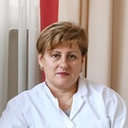Photoprotective effects of two natural products on ultraviolet B-induced oxidative stress and apoptosis in SKH-1 mouse skin.
Ključne riječi
Sažetak
Solar ultraviolet radiation (UV) is the major cause of nonmelanoma skin cancer in humans. Photochemoprevention with natural products represents a simple but very effective strategy for the management of cutaneous neoplasia. We studied the photoprotective activity of Calluna vulgaris and red grape seed (Vitis vinifera L, Burgund Mare variety [BM]) extracts in vivo in an SKH-1 hairless mice skin model. Fifty 8-week-old female SKH-1 hairless mice were randomly divided into 5 groups (n = 10 each): controls, UVB-irradiated, C. vulgaris plus UVB-irradiated, BM plus UVB-irradiated, and epigallocatechin gallate (EGCG) plus UVB-irradiated. A dose of 4 mg/mouse per cm² of skin area for both extracts was topically applied to the mice 30 minutes before a single-dose (240 mJ/cm²) UVB exposure. EGCG dissolved in phosphate-buffered saline (pH 6.6; 0.067 M) was administered at 2 mg/mouse per cm². Glutathione peroxidase and catalase activities, reduced glutathione (GSH), malondialdehyde, nitric oxide, and caspase 3 activity were determined in skin homogenates 24 hours after irradiation. A single dose of UVB increased GSH levels and glutathione peroxidase activity in the exposed skin. C. vulgaris and BM pretreatment significantly decreased GSH formation and glutathione peroxidase activity (P < .001) and inhibited UVB-induced lipid peroxidation (P < .0001) and nitric oxide production (C. vulgaris: P < .06). Topical treatments with C. vulgaris and particularly BM extracts (P < .002) significantly reduced caspase 3 activity, indicating that the cells were protected against apoptosis. These results suggest that C. vulgaris and BM extracts might be chemopreventive candidates for reducing UV-induced risk for skin cancer.



